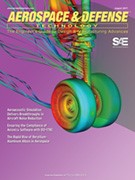Magazine

Aerospace & Defense Technology: September 2021
2021-09-01
Pulse Plasma Nitriding for Aerospace Application Ruggedization of Electronics for Deployed Military Environments Migrating Advanced Signal Processing Technology to Rugged SFF Platforms Radar Recording Proves Next-Level System Performance As radar and electronic warfare systems contend with an increasingly crowded environment, recording tests, interactions, and conflicts provides insight that can help assure future triumphs. > Facing 5G New Radio (NR) Test Challenges Communicating Via Long-Distance Lasers The Purpose of Mixed-Effects Models in Test and Evaluation The simplest version of a mixed model-the random intercept model, where so-called random effects represent group-wide deviations from a grand mean-can account for day-to-day deviations in system performance while still allowing the results to be generalized beyond the few days of observed testing.




